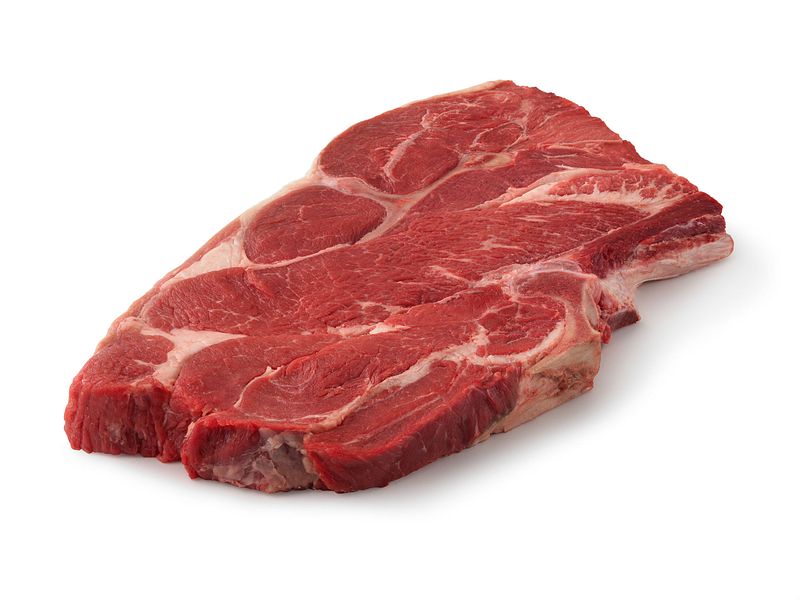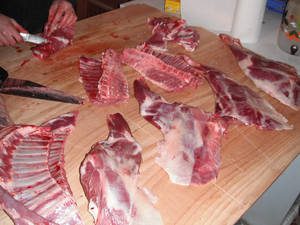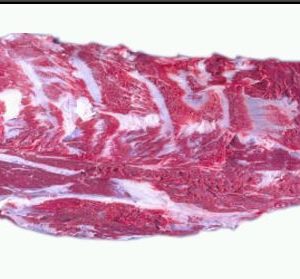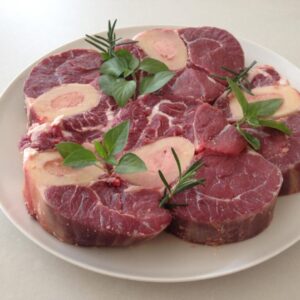Description
All About Shoulder (Chuck/FQ T-Bone)
Shoulder cuts, including chuck and FQ (Forequarter) T-bone, are often overlooked yet offer rich flavor and versatility. These cuts come from the shoulder area of the cow, known for its muscle and connective tissue, which contribute to their robust taste. Whether you’re braising, slow-cooking, or grilling, shoulder cuts can deliver satisfying and hearty meals. Let’s explore the characteristics, cooking methods, and tips for preparing these delicious cuts.
Characteristics
- Chuck: The chuck cut is situated near the shoulder and neck of the cow. It contains a good amount of marbling, which adds flavor and tenderness when cooked properly. Chuck can be sold as chuck roast, chuck steak, or ground beef, making it versatile for various dishes.
- FQ T-Bone: The FQ T-bone features both the strip steak and the tenderloin, connected by a T-shaped bone. While traditionally associated with premium cuts, the forequarter version includes the shoulder area, offering a slightly different texture and flavor profile compared to the more expensive loin cuts.
Nutritional Benefits
Shoulder cuts like chuck and FQ T-bone are excellent sources of high-quality protein and essential nutrients, including:
- Protein: Important for muscle growth and repair.
- Iron: Vital for oxygen transport in the blood, contributing to overall energy levels.
- Zinc: Supports immune function and is important for cellular metabolism.
- B Vitamins: Including B12, which is crucial for energy production and brain health.
Incorporating these cuts into your diet can provide a rich source of nutrition while delivering satisfying flavors.
Cooking Methods
Shoulder cuts are best suited for slow-cooking and braising methods that allow the meat to become tender while infusing it with flavor. Here are some popular ways to prepare these cuts:
- Braising: Cooking chuck or FQ T-bone in liquid (such as broth or wine) for several hours helps break down the connective tissue, resulting in tender, flavorful meat.
- Slow Cooking: Using a slow cooker allows for a hands-off approach to cooking shoulder cuts. Simply season the meat, add vegetables and broth, and let it cook low and slow for several hours.
- Grilling: Chuck steaks can be marinated and grilled for a smoky, charred flavor. Be mindful of cooking times, as they can become tough if overcooked.
- Stewing: Shoulder cuts can be cut into cubes and used in hearty stews, where they can simmer with vegetables and spices, resulting in a comforting meal.
- Roasting: A chuck roast can be seasoned and roasted in the oven, creating a flavorful crust while keeping the inside tender.
Flavor Combinations
Shoulder cuts pair well with a variety of flavors:
- Herbs and Spices: Fresh herbs like rosemary, thyme, and bay leaves complement the rich taste of the meat.
- Garlic and Onions: Adding these aromatics enhances depth and complexity.
- Acidic Ingredients: Tomatoes, vinegar, or citrus can balance the richness of the meat.
Tips for Perfect Shoulder Cuts
- Marinate: Consider marinating the meat overnight to enhance tenderness and flavor.
- Brown Before Cooking: Searing the meat before slow cooking or braising can add a rich, caramelized flavor.
- Cook Low and Slow: Allow ample cooking time to break down the connective tissue, resulting in tender meat.
- Resting Time: Let the meat rest after cooking to allow juices to redistribute for maximum flavor.
Conclusion
Shoulder cuts like chuck and FQ T-bone are flavorful, versatile, and economical options for creating hearty meals. Their rich taste and ability to absorb flavors make them ideal for a variety of cooking methods. By taking the time to slow-cook or braise these cuts, you can create delicious dishes that bring comfort and satisfaction to your table. So next time you’re planning a meal, consider the delicious potential of shoulder cuts for a fulfilling dining experience!






